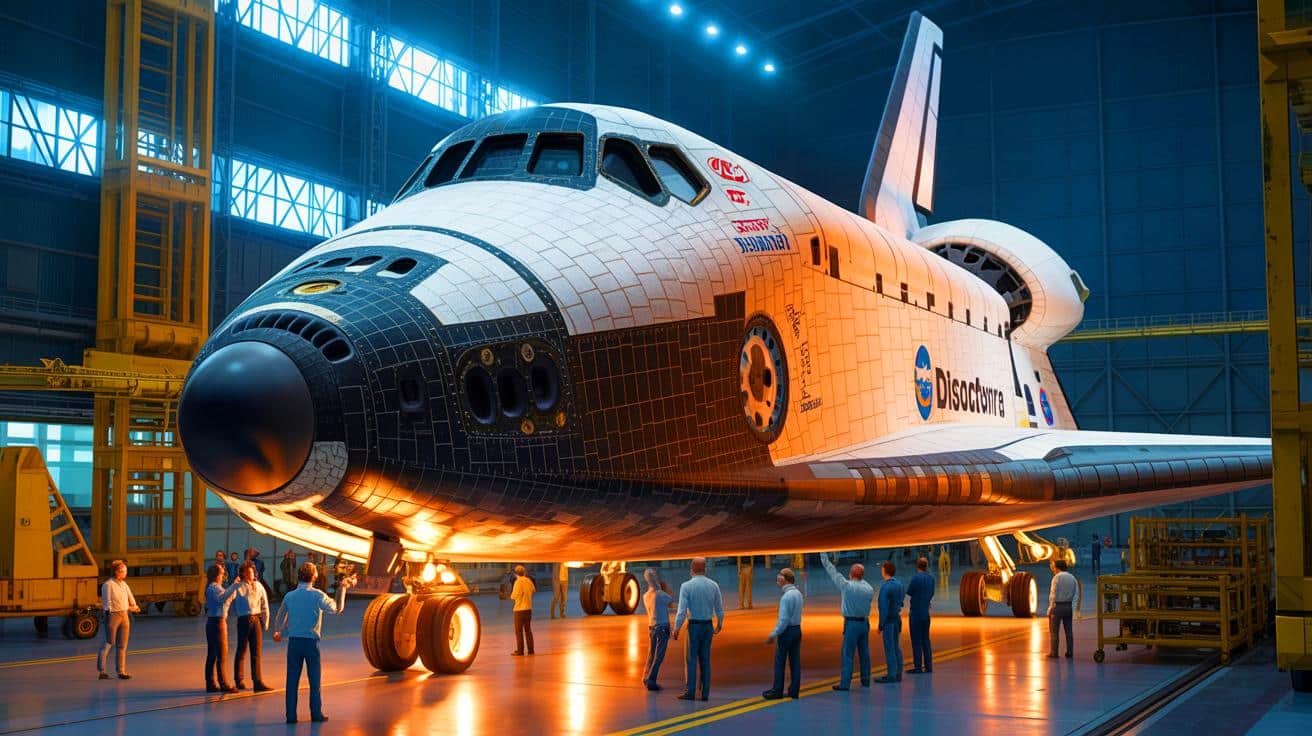IN A NUTSHELL
🛰️ NASA considers disassembling Space Shuttle Discovery for relocation from Virginia to Texas.
🌌 Concerns rise about potential damage to Discovery’s historical integrity and structural components.
💰 Estimated relocation costs could reach $150 million, exceeding the budgeted $85 million.
🏛️ Debate highlights a clash between political motivations and preservation of national heritage.
NASA’s Space Shuttle Discovery, an emblem of America’s space exploration legacy, is at the center of a heated debate that pits historical preservation against logistical challenges. The shuttle, which has been housed at the Steven F. Udvar-Hazy Center in Virginia, is slated for a move to the Space Center Museum in Houston, Texas. However, the proposed relocation has sparked controversy, as discussions include the possibility of disassembling the shuttle to facilitate its transport. This plan, embedded in a larger legislative package, has drawn criticism from experts and institutions concerned about the potential damage to this iconic artifact.
The Historical Significance of Discovery
The Space Shuttle Discovery holds a pivotal place in the annals of space exploration. Having completed 39 missions between 1984 and 2011, it served as a workhorse for NASA, ferrying astronauts to and from space and contributing to key scientific discoveries. Its missions included the deployment of the Hubble Space Telescope and the completion of construction on the International Space Station. The shuttle’s design was revolutionary for its time, featuring reusable components that reduced the cost of space travel.
Preserving Discovery in its entirety is vital for future generations. The shuttle stands as a testament to American ingenuity and perseverance in the face of technological challenges. The potential disassembly threatens not only the shuttle’s structural integrity but also its historical value. Experts argue that dismantling Discovery would erase crucial elements of its story, as the shuttle is one of the most intact orbiters from the NASA program. The Smithsonian Institution, which currently houses the shuttle, underscores the importance of maintaining its original form for educational and historical purposes.
Logistical Challenges and Cost Implications
Transporting a massive artifact like Discovery is no small feat. The shuttle’s aluminum frame, coupled with its delicate ceramic tiles and thermal insulation blankets, presents a formidable challenge. These components were never designed for disassembly, and doing so could result in irreparable damage. The complexity of the shuttle’s construction makes the prospect of moving it in pieces both risky and costly.
NASA estimates that the cost of moving Discovery could escalate to between $120 million and $150 million, far exceeding the $85 million allocated by legislation. This budget shortfall raises questions about the feasibility of the project. Critics argue that the funds could be better utilized for other space exploration endeavors or educational initiatives. The financial implications of the move are significant, and proponents of the relocation must address these concerns to justify the expenditure.
Political Motivations and Controversy
At the heart of the relocation debate is a political tug-of-war. The provision to move Discovery to Houston was included in a legislative package supported by Texas senators John Cornyn and Ted Cruz. Their argument centers on placing the shuttle in a location that reflects its significance to the nation’s space program. Houston, home to NASA’s Johnson Space Center, is seen by some as the rightful place for Discovery.
However, the Smithsonian and other opponents view the move as politically motivated, with little regard for the shuttle’s preservation. The heated exchanges between lawmakers and institutions reflect deeper divisions over the stewardship of national artifacts.
The Smithsonian argues that “Discovery will have to undergo significant disassembly to be moved,” a process that could strip it of its historical context.
The debate underscores the tension between regional pride and the broader interests of national heritage.
Preservation vs. Relocation: The Way Forward
The discourse surrounding Discovery’s relocation raises fundamental questions about how America values its space exploration heritage. Preservationists advocate for keeping the shuttle in its current location, where it can be appreciated by the public and scholars alike. They argue that moving the shuttle, especially if it involves disassembly, risks losing an irreplaceable piece of history.
On the other hand, proponents of the move believe that placing Discovery in Houston will enhance its accessibility and inspire future generations. They contend that the shuttle’s story will be better told in a city synonymous with space exploration. The challenge lies in finding a balance between these competing interests. As stakeholders continue to debate the issue, the future of Discovery hangs in the balance, waiting for a resolution that respects both its legacy and the logistical realities of its relocation.
The debate over the Space Shuttle Discovery’s future is emblematic of broader issues in preserving national artifacts. As discussions continue, stakeholders must navigate the complex interplay of history, politics, and logistics. With so much at stake, the question remains: How can we best honor our past while looking toward the future of space exploration?
This article is based on verified sources and supported by editorial technologies.
Did you like it? 4.6/5 (30)

